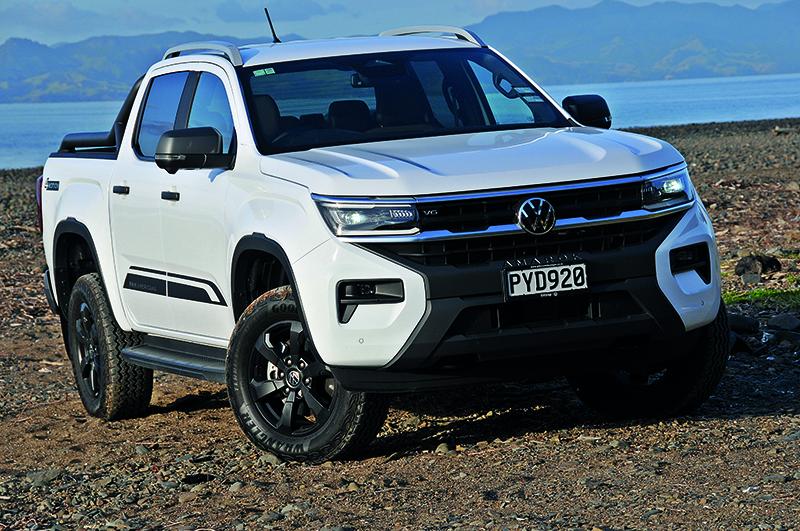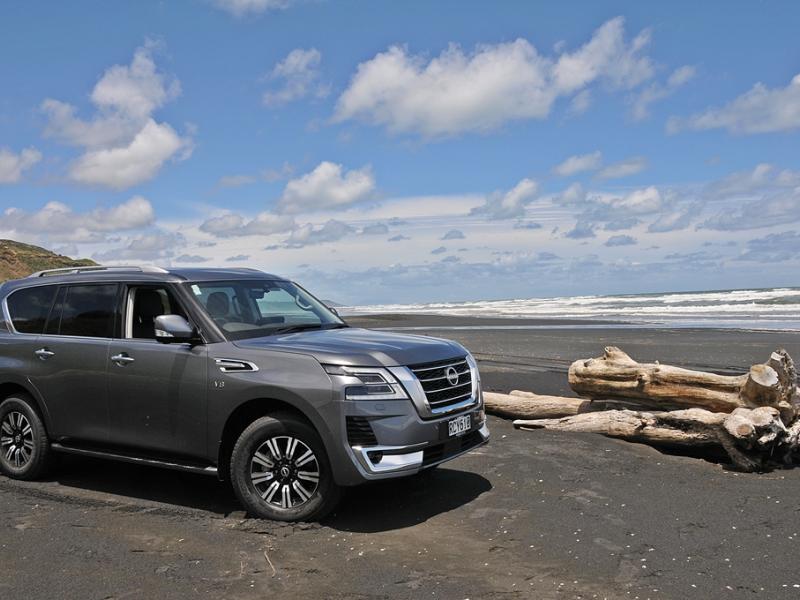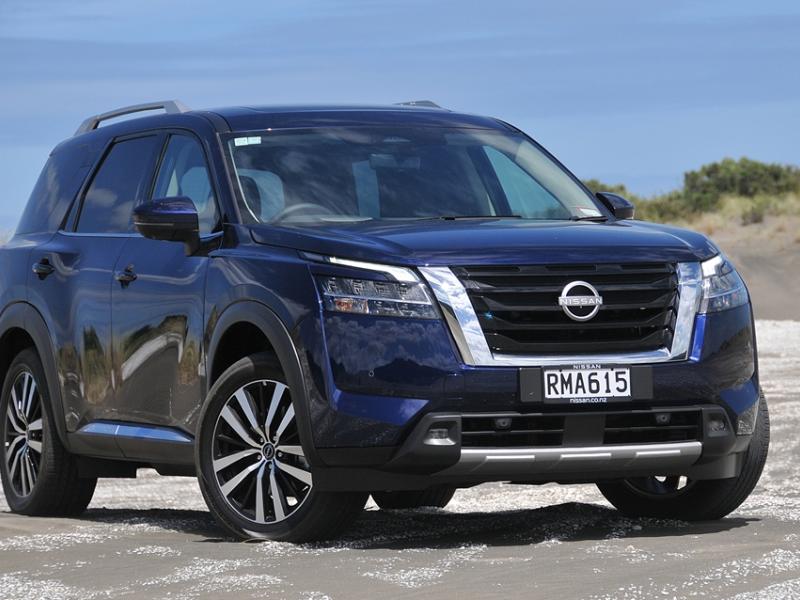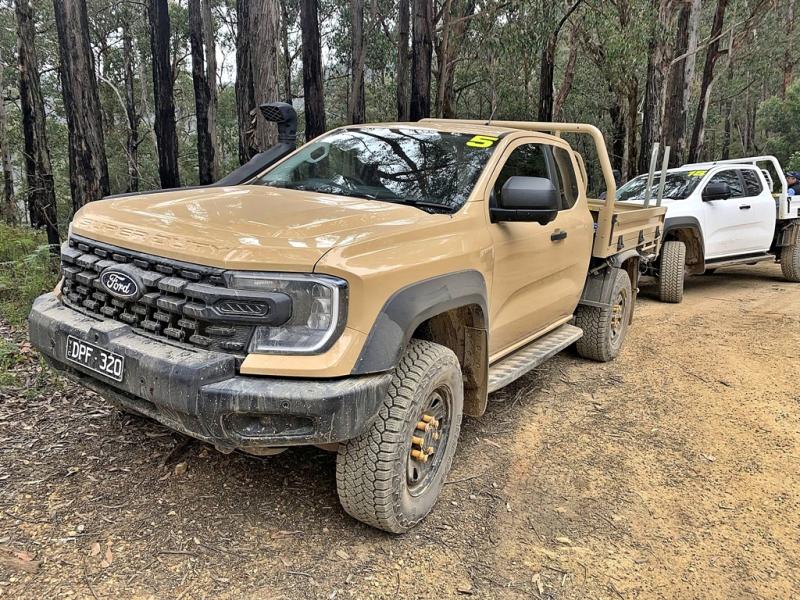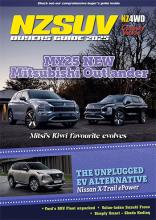This is where the new Amarok range takes a big step up. The 2023 Panamericana is wider, longer, more stable than old-version Amaroks. The whole range can make that claim.
ut as we climb the range, we leave behind the four-cylinder diesel engine and venture into ‘V6 land’.
Amarok teams a 3.0-litre turbo-diesel V6 with a ten speed ‘proper’ automatic transmission. This may be the best team-up of engine, transmission and 4WD system of the range.
It offers ‘mode’ options like the others, but also adds the 4A option to the transfer case rotary dial. That means the truck can be driven in 4WD on the road without causing unpleasant clonks and groans from the driveline. It also means a surefooted drive in dodgy weather or on dodgy roads, which New Zealand has a few of.
That engine is good. Very good. It makes the most power of the range, 184kW at 3,250rpm. More importantly, it has the most torque in this part of the market, 600Nm between 1,750 and 2,250rpm. The secret there is the transmission. While the torque ‘plateau’ is relatively narrow, ten forward speeds (applied through high or low range) ensure there’s always the right gear available. This V6 10-speed pairing may well be the best marriage of components available today.
There's a great sense of connection and sure-footedness, which pays dividends in terms of managing fatigue on long drives on rough country roads or unsealed surfaces.
Off-road, this new Amarok is better than the old model. The original was good off-road even though it was missing low-range. But it would have been better with one.
The transfer case makes a huge difference.
The availability of hill descent control is almost expected these days. Panamericana is no disappointment in this regard, in fact the HDC on our test truck was one of the smoothest and quietest we’ve sampled.
More to the point, this new model comes with better levels of ground clearance, better approach and departure angles, an excellent 800mm fording depth, 217mm ground clearance and the wider track/longer wheelbase combination brings a significant boost in stability and axle articulation.
A thumbs-up note to VW: the New Zealand range is more logical than other markets, where there’s a tradie-basement model under the Life and confusingly also a 2.3-litre turbo petrol version of the top-of-the-line Aventura. Australia also gets a V6 Style. Blurring the lines a bit.
Inside, this new Amarok has a more spacious and comfortable second row (with curtain airbag coverage), a bigger and better infotainment display, and a comprehensive suite of safety features. The interior here is well stacked with features and creature comforts: two-tone leather upholstery, heated Savona leather front seats with electric driver’s adjustment, leather materials on the dashboard, and an upgraded eight-speaker sound system. Volkswagen’s smart interior design has helped the Amarok stand apart from rivals. It clearly communicates its European ‘flavour’.
The multifunction wheel is chunky leather, easy to grip.
The nicely damped second glovebox feels quality and adds a handy additional storage element on the dash. The leather-look wrapping of the dashboard certainly raises the benchmark in the ute class.
The upholstery is a stand-out step up from the Life and Style. Two-tone seats with high grippy side bolsters are heated for those chilly mornings.
The load space of the PanAmericana gets a tub liner and sports bar. Coming up the range, the Panamericana is the first in the range to wear a set of aluminium roof rails.
The whole look is darkened-down compared to the Amarok Style. The sports bar is powder-coated black where Style’s was chrome, and the 18” Amadora aluminium alloy wheels are fully black. On our Frozen White test truck, the wedge of black Panamericana decal branding on the doors works to break up the vehicle’s flanks.
Though it’s very much the all-road/off-road star of the range, the side steps make it look lower that the stepless Life. It’s not. In extreme going, the steps would get a bit of a hammering from track-edge debris, that’s all.
Other bits include LED tail-lights, black roof lining, and darkened exterior elements like the grille, side mirrors and doorhandles.
The onboard safety suite includes blind-spot monitoring, rear cross-traffic alert, autonomous emergency braking, lane-departure warning, lane-keep assistance, traffic sign recognition, intelligent speed limiter, and adaptive cruise control with lane centring.
There are nine airbags inside the cabin of the new Amarok, with curtain airbags (that includes second-row coverage), a front centre airbag, and knee airbag for the driver and passenger.
On top of a fresh five-star ANCAP safety rating, which was gathered through testing by Euro NCAP in Europe, the Volkswagen Amarok boasts some solid numbers in terms of individual scores. Adult occupant protection is rated at 86 per cent, while child occupant protection rates at 93 per cent. Vulnerable road users (pedestrians) get 74 per cent worth of protection, while the safety assistance systems get an 83 per cent rating.
On-road driver assists are well configured. We get the ‘hand of God’ lane keep assist, which is more subtle than many and only becomes active above 65km/h. It applies a counter-steer when it detects an unexpected lane change. Autonomous emergency braking is a proven life saver and works above 5km/h. Even better, use 4-Lo and it deactivates automatically. Adaptive cruise control helps maintain a safe distance between the front bumper and the car ahead. Park assist/advanced park assist are an urban parking lifesaver in a ute this size.
Towing is class-leader level: 750kg unbraked, 3,500kg braked and a tray payload just under the tonne. There’s a specific drive mode for towing that downshifts the transmission earlier when going under load – like an uphill slope.
The roof rails are rated for a static load of 350kg. Perfect for a roof box.
Driving: we hit a mixed-surface trek east of Auckland which included rural tarmac, twisty and rutted; muddy tracks alongside a stream; and a run on the rocky Orere Beach near the big mussel farm. The latter was an eye-opener, giving a chance to feel the fore-aft torque-apportioning of the transmission’s 4A setting. On gravel roads and even in the mud, torque shifts are almost impossible to detect.
But on rocky beaches, grip can be oddly unpredictable as the stones wriggle around in their sand base and under power it’s easy to dig in all the way to the diffs. Not so much in the Amarok, which sends torque to front or rear as needed. The truck settles in, grips and moves forward relentlessly. There’s also that rear lockable diff to use if the truck begins to sink or spins all four wheels. It is selectable at speeds under 40km/h.
We particularly liked the Panamericana’s ride and handling. In fact, from the Life on up the new range is exceptionally good on and off road, though the upper echelon – Panamericana and Aventura – may not venture into mud-bogs and soggy paddocks all that often. In the Panamericana that’s a pity; it’s a weapon in the dirt.
The Amarok disrupted the 4WD ute market when it arrived, and quickly became the ute that others were measured by. Thankfully, and unsurprisingly, the new Amarok can still hold its head high in this regard.
Particularly, the PanAmericana specification gets its own suspension tune that leans into the off-road focus of this model.
Making a four-wheel-drive ute handle and feel like a passenger car has always been a weird aspiration where it robs the vehicle of off-road credibility. Four-wheel-drive utes these days are constantly evolving into refined, premium family cars with a with a wellside for tools and toys. The new Amarok comfortably continues the trend of gentrification while retaining excellent off-road and loose surface abilities.
Having supple suspension plays into the role of the modern-day ute, and it puts the PanAmericana in a good place.
Technology costs. Capability has a price. In this case, the Panamericana steps up $13,000 over the four-cylinder Style. But the increment is certainly worthwhile. If the budget is able to stretch far enough, this PanAmericana could be the pick of the range.

